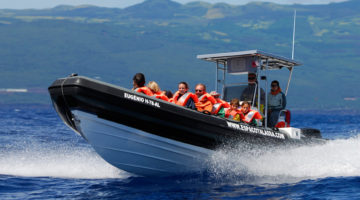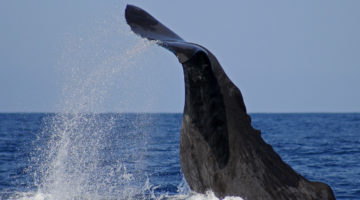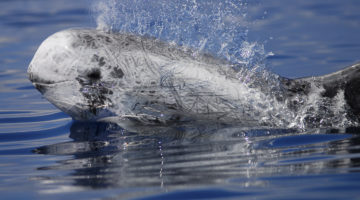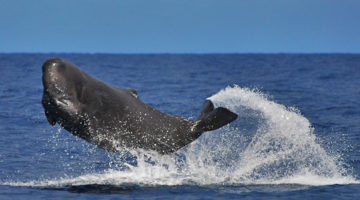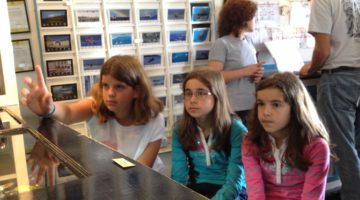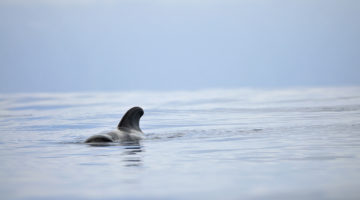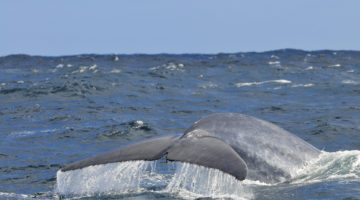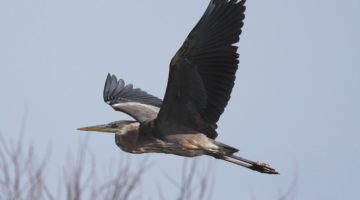Dolphins, whales & men as a family
- Welcome and transfer from Faial or Pico airport to hotel in Lajes do Pico.
- 7 nights accommodation with breakfast.
- 5 boat excursions (including boat, fuel, harbour costs & equipment, etc.) depending on weather conditions.
- Access to all BOCA services: mountain bikes, kayaks, library, …
- Insurance (general assistance, illness, accident, cost of rescue operations).
- Entrance to the whaler’s museum.
- Government taxes “cetaceans observation permit”.
The whale watching package runs weekly from Saturday to Saturday.
Extra charge for arrivals & or departures at Faial airport only 30 euros per pax each way.
- Special family rate for 2 adults and 2 children under 18.
- Prices are based on family room occupancy.
- Day 1 – Meet & Greet at Horta or Pico airports.
Transfer to Lajes do Pico, the heart of Azorean whale watching, and the hotel “Whale’come ao Pico”, our base.
- Day 2/7 – Lajes do Pico
- Departure from Lajes do Pico harbour at approximately 10am, for your encounter with the animals. Once in the company of dolphins, you’ll enjoy listening, observing and edging even closer for improved camera work.
- Return to Lajes at around 1pm. Afternoons are free, to do you as wish.
- In the Whaling Museum, you’ll find a fantastic collection of scrimshaw (engravings on sperm whale’s teeth) as well as one of the most complete libraries in the world on the art of whale hunting.
- The “Vigia da Queimada” is well worth a visit.
- The BOCA, our Base of Observation of the Cetaceans of the Azores, can provide you with documentation (books, audiovisual materials, Internet access).
- The BOCA, also has mountain bikes and a sea-going kayak which you can take to “Maré” and “Castelete”.
- “Calheta de Nesquim”, the Azorean port from where the first whaling boat went out, will appeal to the more energetic visitors. The little harbour was also one of the most active centres during the years of prosperity (1950’s).
- A “bit” further down the road, you can visit the old whaling factory of São Roque.
- Otherwise, after having spent the morning at sea, let yourself be carried away by the sweetness of the Azorean summer and enjoy an afternoon of “dolce farniente” in the coolness of your hotel or at the edge of the ocean, which is never far away. It is possible to join our guided tour, click here for more info.
- Day 8 – Lajes do Pico/Airport (timings will correspond with your international flight).
This summary gives an indication of what to expect during your stay. Your guide may modify your trip slightly in function to the weather conditions, safety, the number of participants and of course the presence of whales.
 By choosing Espaço Talassa, you choose to limit your ecological footprint.
By choosing Espaço Talassa, you choose to limit your ecological footprint.
- Espaço Talassa plants trees and contributes to a “micro-reserve” project as compensation for the ecological deficit and the CO2 emissions related to our whale watching activity, in collaboration with association “Quercus”.
- For each customer €0,50 cents will be donated towards the “Cabeço Santo” (GPS position: 40º31’52″N 8º20’36″W- Google Maps) reforestation project in the mountain range of Caramulo, victim of a terrible forest fire in 2005. Soon the indigenous vegetation will substitute eucalyptus, acacias and other infesters.
It’s true: “the sea is blue because forests are green”!
30 years of experience in the Azorean sea
Our team is highly disciplinary and ethnically rich, being composed of a majority of natives but also Dutch, German, English, French, Brazilian and Spanish…
Undoubtedly one of the 10 best whale watching spots in the world
The Azores, and especially Lajes do Pico, is undoubtedly one of the 10 best whale watching spots in the world, and for sure the best in the Azores. Tourist frequentation is still small, the quantity and diversity of the whales observed is high, there’s little visual pollution and Pico mountain lies in the background.
Small boats which limit the impact on the animals
Driven by 4 stroke engines: less noise and chemical pollution… “Size matters”!
Small groups, maximum 12 people per boat
It is evidently more human!
Multimedia Briefing
Before each whale watching trip, we give an approximate 30 minute presentation on biology and animal behaviour, the history of whale hunting, ecology, legislation…
Debriefing
After each trip, have a drink and debrief with our specialists on the species observed, your doubts or questions…
Queimada look-out post, an Espaço Talassa exclusive,
A minimum of 2 look-outs direct a maximum of 3 boats. The look-outs locate the animals, and guide the whale watching boats to minimise the negative impact on the animals: manage the number of boats around the same group, manage boat speed and angles of incidence. There is therefore a strong complicity and trust between them and the skippers.
Boats equipped with hydrophones
Not only to help locate the animals, but especially to add acoustics to the visual experience
Responsible travel
By choosing to experience whale watching with Espaço Talassa, you are choosing to limit your ecological footprint. Espaço Talassa plants trees and contributes to a “micro-reserve” project as compensation for the ecological deficit and the CO2 emissions related to our whale watching activity. For each customer, approximately €0,50 cents are donated to the Project
Fair trade tourism
Espaço Talassa believes that encountering the cetaceans is educational and should be accessible for the locals: whalers’ children, youngsters, students, the less privileged… “Solidaridade“is a project which allows the inhabitants of Pico, students of any age, youth card holders, and the unemployed to encounter the whales and dolphins which cross south of Lajes do Pico by paying a symbolic sum of 30€.
Let’s lay our cards on the table:
- Our whale watching boats are fast and intended for active trips. Unfortunately, we cannot accommodate people with reduced mobility, pregnant women, or anyone with osteoporosis, sciatica, …
- Comfort on board is basic therefore it’s worth taking some precautions before embarking. The gentlemen’s WC’s are on starboard and the ladies on portside… with breath-taking views of the Atlantic!
- We put you directly in contact with nature which can also mean rain (sometimes pretty heavy) and the sun…
- As we believe that swimming with dolphins could be a risky activity for you and overall very intrusive for the animals, we stopped the activity in 2017. To learn more: Why you shouldn’t swim with dolphins
Where are the Azores?
Trace a straight line from Lisbon to New York, and in the middle of the Atlantic, you’ll find the archipelago of the Azores. The archipelago is divided into 3 groups, and in the central group, on the southern coast of Pico island, you’ll find Lajes…
- This is where Europe ends: 38 degrees North and 30 degrees West, some 800 nautical miles from the nearest coast, in the middle of the Atlantic Ocean. The Azoreans, isolated for centuries, have survived on their resources of agriculture, fishing and…. whale hunting. Melville drew inspiration from such odysseys to write his epic tale, “Moby Dick”.
- For the last 30 years, it has been strictly prohibited to harm cetaceans in the Azores.
- The sperm whale prefers the south coast of Pico. Here, assisted by Marcel, the Queimada’s lookout, you can observe the whales and get close to them. The ambition of the project goes even further as it includes an introduction into other traces and vestiges of the whaling culture and tradition, of which the people of Lajes are the last witnesses.
- Last but not least these wildlife observation holidays, which respect both the animals and the local culture, are the natural way for Azoreans to continue to remain involved with whales long after the end of whale hunting in 1984. Whale watching offers an alternative way with whales for the Lajes community, and at the same time is an ideal way to protect the giants of the sea.
- To have a Wiki-idea about the Azores, please click here
Thanks to our look-out techniques from land, we don’t leave the harbour blindly. Each morning before embarking, a briefing is held during which we take into consideration the observations made by the lookout. The type of cetacean spotted, their groups, their distance from the harbour, the sea conditions, the number of animals in the group, and the absence or presence of smaller whales are all necessary factors in assessing the quality of forthcoming excursions.
28 cetacean species frequent the Azores sea
In the interface of the North Atlantic, between “hot water” and “cold water”, the archipelago is without any doubt one of the best places for cetacean observation in the northern hemisphere. Also, because the islands are far away from the main merchant navy routes, recreational sailing has not yet made the carnage known in Continental Europe, and the large pollution emitters are relatively far off.
Tarifs
| Low Season from 10-05 to 11-01 |
Medium Season from 04-20 to 06-28 and from 09-14 to 10-04 |
High Season from 03-23 to 04-19 and from 06-29 to 09-13 |
|
|---|---|---|---|
| 8 days package | €1500 | €1700 | €2099 |
